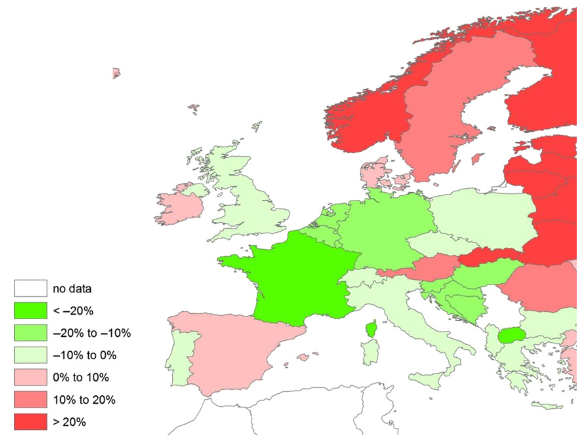The Importance of the One Health Initiative
Climate change affects livestock in many different ways. From heat intolerance to low yields many of these cause negative effects for humans as well, mostly in the form of food security. However, animals are known to carry diseases that transfer to humans. Diseases that transfer from animals to humans are known as zoonotic diseases. Many pandemics and epidemics can be contributed to zoonotic diseases. Zoonotic diseases are estimated to make up 60% of current infectious diseases and are predicted to be 75% of emerging diseases. It is predicted that as the climate and world ecosystems change, more zoonotic diseases will be introduced into the population. Climate change is likely to create a situation human and animal migration is necessary. It is predicted that many areas will become inhabitable. As animals and humans migrate they bring contagions that are not native to the area they are moving to. The populations there are vulnerable to these diseases. This is a threat that can be countered. An example of this is the migration of ticks and mosquitos into Europe. The map below shows the countries that could experience higher levels of tick migration due to their change in climate. The red countries are more likely to see disease carrying ticks migrate into their countries. The green represents climates that will see less tick migration. There are several local, national, and international plans used to try and combat the existing threat of zoonotic diseases. Most of these programs are under the One Health Initiative from the World Health Organization.

The purpose of the One Health Initiative is “a movement to forge co-equal, all-inclusive collaborations between physicians, osteopathic physicians, veterinarians, dentists, nurses, and other scientific-health and environmentally related disciplines” (One Health Initiative Website). In a nutshell, the One Health Initiative combines many different kinds of health to try and prevent the movement of diseases from animals to humans. As this is a highly complex problem it needs a innovative solution. These types of solutions require information from many different sectors that are involved. The image below shows some of the animals industries that can contribute to zoonatic diseases.

Organizations like these are incredibly important. We are already beginning to see the effects of new zoonotic diseases on society. We are only now seeming to come out of a pandemic that has plagued us for almost three years. There is some debate on whether COVID-19 was transferred from a bat or from a pangolin. Whichever animal it came from does not matter as much as the chaos that ensued after. Debates over vaccines and the virus mutating created a reality that not many were happy with. Frankly, it was a trial run, one that we failed at. Epidemics like this are likely to continue happening unless certain parameters are put into place. Biosecurity measures on farms, correctly labeling and vetting exotic bush meats, and education for veterinarians and doctors in identifying zoonotic diseases can help to prevent or mitigate the risk of another zoonotic pandemic.
Salyer, Stephanie J., Rachel Silver, Kerri Simone, and Casey Barton Behravesh. “Prioritizing Zoonoses for Global Health Capacity Building—Themes from One Health Zoonotic Disease Workshops in 7 Countries, 2014–2016.” Emerging Infectious Diseases 23, no. 13 (2017). https://doi.org/10.3201/eid2313.170418.
Bacon, S.J., Aebi, A., Calanca, P., Bacher, S., 2014. Quarantine arthropod invasions in Europe: the role of climate, hosts
and propagule pressure. Diversity and Distributions 20, 84–94.. doi:10.1111/ddi.12149
Magouras, I., Brookes, V. J., Jori, F., Martin, A., Pfeiffer, D. U., & Dürr, S. (2020). Emerging Zoonotic Diseases: Should We Rethink the Animal–Human Interface? [Opinion]. Frontiers in Veterinary Science, 7. https://doi.org/10.3389/fvets.2020.582743